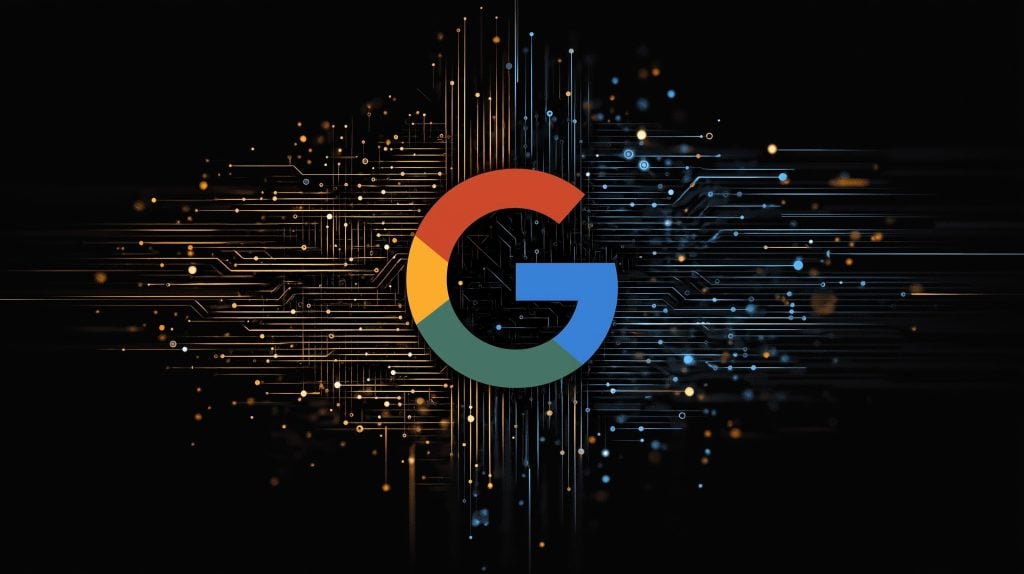- Gemini CLI was released by Google on June 25, 2025, as an open-source Apache-2.0 tool integrating Gemini 2.5 Pro into the terminal.
- Gemini 2.5 Pro in the CLI provides a 1,000,000-token context window and a free tier of up to 60 model requests per minute and 1,000 requests per day for personal Google accounts.
- The CLI runs natively on macOS, Linux, and Windows (no WSL) as an npm package requiring Node.js 18+, installable with npm install -g @google/gemini-cli.
- It includes built-in Google Search for real-time data and supports Model Context Protocol (MCP) to connect to external data sources and tools.
- Gemini CLI can execute shell commands, chain multi-step workflows, and uses a user-approval sandbox with macOS Seatbelt or Docker/Podman isolation on other OSes.
- It supports multimodal generation by calling Imagen for images and Veo for videos from within the CLI.
- The project is open-source under Apache 2.0, with GEMINI.md per-project prompts and persistence, and MCP extensions for custom integrations.
- It integrates with Google Cloud tools, demonstrated deploying to Cloud Run, and may leverage Vertex AI for governance in enterprise deployments.
- Early reception highlighted its generous free tier and native Windows support, which avoids WSL, as a competitive advantage.
- Gemini CLI remains in Preview as of mid-2025, with ongoing feedback collection and questions about pricing on general availability.
Google Gemini CLI: The Open‑Source AI Agent Transforming Your Terminal
Overview – What Is Google Gemini CLI?
Google Gemini CLI is an open-source command-line interface (CLI) tool introduced by Google in mid-2025 that brings the power of Google’s Gemini AI models directly into developers’ terminals [1] [2]. In essence, it’s a terminal-based AI assistant (or “agent”) designed to help developers write code, debug, and perform a broad range of tasks using natural language commands. Google describes Gemini CLI as a “fundamental upgrade to your command line experience” that offers “the most direct path from your prompt to our model” [3]. While it excels at coding assistance, it is built to do “so much more”, functioning as a versatile local utility for content generation, problem solving, deep research, and task management [4].
At its core, Gemini CLI connects to Google’s Gemini 2.5 Pro large language model (LLM) – currently Google’s most advanced AI model for reasoning and coding tasks [5]. This means the CLI can leverage a massive 1 million-token context window (far larger than most competing models) to understand and manipulate code or content [6]. The tool runs locally in your terminal (supporting Mac, Linux, and even Windows natively), acting as a lightweight AI agent that reads, writes, and executes commands on your machine based on natural-language prompts [7] [8]. Because it operates in the familiar terminal environment, developers don’t need to switch context or IDEs – they can simply ask the AI to explain code, generate functions, run build/test commands, or even perform web searches, all from the command line.
Gemini CLI’s primary purpose is to integrate AI assistance seamlessly into developers’ workflows. Google’s motivation for building it is the recognition that “the CLI isn’t just a tool; it’s home” for many developers [9]. By embedding AI into this environment, Gemini CLI aims to boost productivity and make the terminal even more powerful. In Google’s words, “as developers’ reliance on the terminal endures, so does the demand for integrated AI assistance” [10]. Gemini CLI addresses that demand by providing natural-language interface to coding and system tasks, backed by a cutting-edge AI model. And importantly, Google has open-sourced Gemini CLI (under an Apache 2.0 license) [11] – meaning developers can inspect the source code, extend its functionality, and even contribute improvements on GitHub.
Key Features and Technical Capabilities
Free, High-End AI Model Access: Perhaps Gemini CLI’s most notable feature is that it offers free access to a powerful AI model. Anyone with a personal Google account can log in and get a Gemini Code Assist license at no cost, which grants usage of the Gemini 2.5 Pro model in the CLI [12]. This model is state-of-the-art, with a 1 million token context window for understanding large codebases or documents [13]. Google touts this as an “unmatched usage limit” for individual developers – free users can make up to 60 model requests per minute and 1,000 requests per day without paying anything [14] [15]. These limits are extremely generous (roughly double what Google observed its own engineers needing during internal testing) and far exceed the allowances of comparable tools [16]. In practical terms, this means developers can use Gemini CLI heavily for code completion, generation, and queries without quickly hitting a paywall. (For those who do need more or prefer specific models, Gemini CLI can also be configured with an API key for Google’s AI services like Vertex AI, enabling pay-as-you-go usage [17].)
Advanced Code Assistance: Gemini CLI is built to be a coder’s companion. It can read, modify, and generate code across your local files by understanding natural language instructions. For example, you can ask it “Explain what this function does” or “Write a unit test for this module”, and it will analyze your codebase to provide answers or generate the requested code [18]. It supports complex tasks like debugging errors, adding new features, suggesting refactors, and even executing build or git commands on your behalf [19] [20]. Under the hood, it uses the Gemini model’s strong coding abilities – Google notes Gemini 2.5 Pro is currently a top-performing model for coding tasks and benchmarks [21]. The CLI interface means this AI help is available in any editor or IDE you use (since it’s not tied to a specific code editor plugin) – a noted advantage over GUI-based assistants [22]. In fact, Google intentionally integrated Gemini CLI with their existing IDE plugin (Gemini Code Assist) to provide a unified experience: both the VS Code/IntelliJ plugin and the CLI share the same AI backend and “agent” capabilities [23] [24]. This allows a developer to have “one companion, wherever you work” – whether in an editor or in the terminal [25].
Natural Language Command Execution: Beyond just suggesting code, Gemini CLI can actually run commands and tools on your system, making it an “agentic” AI. For example, if you tell it in plain English to compile your program, start a dev server, or perform a database migration, it can issue those shell commands for you [26]. It can also chain multiple steps together autonomously (e.g. “build my app, then deploy it”). To keep this power in check, Gemini CLI employs a human-in-the-loop approval system: by default it will ask for your confirmation before executing any potentially destructive actions or file edits [27] [28]. You can approve a single action, deny it, or choose “always allow” for convenience [29]. This safeguard helps prevent accidents or malicious instructions, and it runs commands in a sandboxed environment for security (on macOS it uses native sandboxing; on other OSes it can use an isolated Docker/Podman container) [30]. Google emphasizes that security was a key focus – each action is explicitly authorized by the user, and the tool supports sandboxing to mitigate risks like unintended system changes or prompt injection attacks [31].
Built-In Tools and Web Connectivity: To enhance its usefulness, Gemini CLI comes with integrated tools that allow it to fetch external information and augment its responses. Notably, it has a built-in Google Search integration: the CLI can automatically perform web searches and retrieve webpages to ground its answers with real-time information [32]. This is useful for tasks like looking up documentation, troubleshooting errors online, or fetching examples from the web – all done by the AI on the fly. In Google’s terms, you can “provide real-time, external context to the model” via the search tool [33]. Gemini CLI also supports the Model Context Protocol (MCP), an emerging standard that lets AI agents connect to external tools and data sources in a structured way [34]. Through MCP or other extensions, the CLI can interface with things like databases, cloud services, or custom APIs. For instance, Google mentions it can connect to MCP servers to let the AI query external databases or services securely [35]. It even has specific creative tools bundled: using Google’s generative media models, the CLI can generate images and videos when asked. In fact, Gemini CLI can call on Imagen (Google’s image generation model) and Veo (Google’s text-to-video model) to fulfill requests – one example given is “make a short video showing the story of a ginger cat’s adventures” using these models [36]. This means the CLI isn’t limited to text and code; it extends into multimodal creation (images, video) as well [37] [38]. Such capabilities make it useful for generating visuals or multimedia content as part of development workflows (e.g. creating an illustrative diagram or demo video via AI).
Extensibility and Customization: Because Gemini CLI is open-source, developers can extend and customize it to fit their needs. Google explicitly encourages the community to inspect the code (hosted on GitHub) and contribute improvements or new features [39]. The CLI was designed to be modular and extensible, leveraging standards like MCP and customizable system prompts. For example, in any project directory you can include a special configuration file (GEMINI.md) which acts as a persistent system prompt or context for that project [40] [41]. In this file, you can define project-specific instructions for the AI – such as coding style preferences, technology stack details, or even team-specific guidelines. Mullen explains that gemini.md lets you “customize how you communicate with Gemini”, specifying your frameworks, preferred commands, and other context so that the AI’s responses are tailored to your project [42]. The CLI will also auto-update the GEMINI.md as you work: it can save important details it discovers (like project architecture info) into that file so they persist between sessions [43] [44]. This gives everyone on a team a consistent AI “memory” for the project. Additionally, advanced users can create custom extensions or tools that Gemini CLI can invoke. Because it supports MCP, developers could hook up their own services (for example, a JIRA integration to file tickets, or a custom library for handling test data) and have the AI agent use those in its workflow [45]. The CLI’s behavior (like default prompts or agent persona) can also be adjusted through config files, akin to how OpenAI’s Codex CLI allows custom instructions [46]. In short, personalization is built in – “everyone deserves the autonomy to make [their terminal] unique”, and Gemini CLI provides hooks to do so [47].
Cross-Platform and Developer-Friendly: Gemini CLI is distributed as an npm package (Node.js 18+ is required) and works on macOS, Linux, and Windows. Unlike some earlier AI CLI tools, it runs natively on Windows without needing a Linux subsystem [48] [49]. Installation is straightforward (npm install -g @google/gemini-cli or even one-line npx execution [50]) and when you first run gemini, you’ll be prompted to log in via a browser to authenticate with your Google account [51]. Once authenticated, the tool opens an interactive CLI session with a chat-style prompt. Developers have noted the interface is more polished than a standard text REPL – “the tool unfolds with a graphically impressive UI”, giving a richer terminal experience [52]. It even has theming options (you can pick a color theme on first run) to match your terminal style [53]. Under the hood, everything runs locally except the calls to the Gemini API. Your source code and data stay on your machine (only prompts and necessary context get sent to the model in the cloud) [54] [55]. This addresses privacy concerns since your codebase isn’t uploaded wholesale – the CLI will only send high-level queries or snippets relevant to your prompt. Additionally, Google has integrated Gemini CLI with familiar cloud and dev tools: for instance, it can work with the gcloud CLI (Google Cloud SDK) for cloud deployments [56]. In a demo, Google showed deploying an app to Cloud Run via the CLI with minimal effort [57] – hinting that the company envisions this tool as a bridge to its cloud platform (e.g. after the AI helps you build an app, it can also help you deploy it on Google Cloud). Overall, Gemini CLI is designed to feel “native” to developers’ workflows – it “is designed to feel familiar to developers” and require virtually no learning curve beyond knowing how to invoke it [58].
Recent News and Updates (2024–2025)
Google unveiled Gemini CLI on June 25, 2025, via an official blog post and coordinated press coverage [59] [60]. The announcement positioned Gemini CLI as part of Google’s broader push in AI, coming on the heels of major updates to the Gemini model itself. (Just a few months prior, in March–April 2025, Google had introduced Gemini 2.5 Pro, an upgrade to its flagship LLM that quickly became popular with developers for coding tasks [61].) By launching Gemini CLI, Google is clearly aiming to capitalize on that momentum and get its AI directly into developers’ hands and terminals. The timing suggests Google’s strategic response to the surging adoption of AI coding tools in 2024–2025. According to TechCrunch, many developers had started using Google’s Gemini models via third-party tools like Cursor and GitHub Copilot, which became “massive businesses” in their own right [62]. Google in turn spent early 2025 rolling out its own AI coding offerings (for example, Gemini Code Assist in IDEs, and an experimental asynchronous code agent called “Jules” [63]) to build a more direct relationship with developers. Gemini CLI’s release in mid-2025 is a capstone to these efforts, bringing an agentic AI experience to the command line.
The official announcement on Google’s blog (posted by Senior Engineer Taylor Mullen and PM Ryan Salva) emphasizes how Gemini CLI is geared for the “next decade” of AI-enhanced development [64] [65]. Salva, in press briefings, stressed that Google believes tools like this “will dominate the way creators work in the next decade”, and that giving it away free in preview will help Google establish a strong position early [66]. Indeed, a major news angle was Google’s generous free tier for Gemini CLI. Many tech outlets highlighted that the tool is free and open source, with usage allowances far above what competitors offer [67] [68]. For example, The Verge noted that this “could give it an edge over other AI coding options like Anthropic’s Claude or GitHub Copilot” by lowering the barrier to entry for developers [69]. DevClass reported that Google is “positioning itself for [the] next decade of AI” with this move, deliberately setting usage limits so high (60/min, 1000/day) that most devs “won’t reach these theoretical limits”, even with heavy use [70]. This strategy was seen as a direct challenge to rivals – as one early commenter quipped, the huge free tier will “put lots of pressure on Anthropic” [71].
In terms of updates, Gemini CLI is in “Preview” as of its launch (mid-2025). Developers can start using it immediately, but Google hints that more is to come. There’s speculation on whether the tool will remain free when it hits general availability. Google hasn’t committed to post-preview pricing yet; The Verge noted that Google did not say if the agent “will remain free when fully available” or how over-limit usage might be handled [72]. It’s possible that in the future certain advanced features or higher quotas could require payment (similar to how other Google Cloud services work). For now, though, the preview is fully featured. Google has also been actively collecting feedback – for instance, the project’s GitHub repository opened with bug trackers and a call for the community to contribute [73]. This suggests the tool will iterate quickly in response to real-world use.
It’s also worth noting the context of Google’s Gemini model evolution in late 2024–2025, as it underpins the CLI. Gemini 1.0 (Pro and smaller “Flash” versions) was first introduced to developers around Dec 2024 [74], followed by Gemini 2.0 in early 2025 with more “agentic” abilities. By May 2025 at Google I/O, the company announced Gemini 2.5 with features like “Deep Think” (enhanced reasoning mode) [75]. All these improvements feed directly into Gemini CLI – for example, the CLI uses Gemini 2.5 Pro which by now includes a 1M token context and improved coding prowess [76]. So one can view Gemini CLI’s launch as not an isolated event, but part of Google’s broader rollout of the Gemini ecosystem (which also includes a web app, APIs, and plugins). In the I/O 2025 developer keynote, Google actually teased the coming of Gemini CLI, and some keen eyes noticed the blog post was briefly published accidentally a day early [77] – signaling how closely this release was coordinated with Google’s AI strategy announcements.
Another recent update mentioned in coverage: Google indicated that in the future, Gemini CLI may support local/offline models. In an interview, Google’s Allen Hutchison noted they “hope to use it with local models such as [Gemma] in future” [78]. “Gemma” is presumably a smaller Gemini-based model that could run on consumer hardware (this aligns with trends of offering smaller fine-tuned models for offline use). While currently the CLI requires internet access to call Google’s cloud API, the architecture is “model-agnostic” and could evolve to accommodate on-premise or open models down the road [79]. This hint suggests Google is thinking ahead to a hybrid future where developers might plug in different AI backends to the same CLI interface.
In summary, the news of Gemini CLI’s release in June 2025 was met with optimism that Google is seriously courting developers by open-sourcing the tool and providing a substantial free usage tier. It’s a notable shift in the competitive landscape of AI dev tools, signaling that Google is willing to forego short-term profit (free compute) to attract users and community contributions. Early reviews have been positive about its capabilities, though observers remain cautious about long-term questions (like pricing, and how it will handle code accuracy and security at scale). Google’s messaging frames Gemini CLI as a long-term investment – a tool that will continuously improve and form a key part of the developer experience in the evolving AI era [80].
Expert Commentary and Insights
Industry experts, developers, and Google’s own product leads have provided insights into what Gemini CLI means for the developer community and how it stacks up in the AI tool landscape. Here are some key perspectives:
- A New Trend in Developer Tools: Tim Anderson at DevClass notes that Google could “not afford to ignore” the trend of CLI-based AI coding assistants, given the success of competitors’ offerings [81]. Anthropic’s Claude Code and OpenAI’s Codex CLI demonstrated that many developers enjoy AI help directly in the terminal, which likely spurred Google to accelerate Gemini CLI’s development [82]. The introduction of Gemini CLI is seen as part of Google “positioning itself for [the] next decade of AI” by embracing this trend early [83] [84]. It’s a recognition that AI agents in coding – whether in editors or terminals – are here to stay and will become standard tools for developers.
- Developer Enthusiasm and Free Tier Reaction: The development community’s initial reaction centered on the remarkably high free usage limits. On forums, many were impressed that Google is offering its top model essentially for free in a convenient package. A popular comment mentioned in DevClass was “Huge [free tier], and will put lots of pressure on Anthropic” [85]. By doubling the highest internal usage that Google observed before setting the limits, they virtually ensured most users will never feel restricted [86] [87]. This goodwill gesture has been interpreted as Google “hungry” to win back mindshare from alternatives like OpenAI. Some analysts believe Google’s free-trial generosity is a strategy to rapidly grow adoption – “perhaps, to achieve a strong position in this market from which it can later take advantage”, as DevClass puts it [88]. In other words, Google might be willing to absorb costs now (in AI compute) for long-term developer loyalty.
- Comparisons to Competitors’ Offerings: Observers have naturally compared Gemini CLI to similar tools. TechCrunch pointed out it “competes directly” with OpenAI’s Codex CLI and Anthropic’s Claude Code, which have reputations for being “easier to integrate, faster, and more efficient” than earlier AI coding tools [89]. The consensus is that Google has now matched those competitors on core features (like local code understanding, command execution, etc.) and leapfrogged them on usage limits. The Verge explicitly mentioned that Gemini CLI’s generous free allowance could give it an edge over Anthropic’s Claude, GitHub Copilot, or even Microsoft’s upcoming AI integration in Windows Terminal [90]. One area of note is Windows support – DevClass highlighted that unlike Claude Code or Codex, which require WSL on Windows, Google’s CLI runs “native” on Windows, making it more accessible to a broad user base on day one [91].
- Quotes from Google’s Team: Google’s own engineers have framed Gemini CLI in visionary terms. “We believe that these tools will dominate the way creators work in the next decade,” said Ryan J. Salva (Google’s Senior Director of Product Management for Gemini) during a media briefing [92]. This quote underscores Google’s view that AI agents like Gemini CLI aren’t a passing fad but a fundamental shift in how software is built – and Google clearly wants to lead, not lag, in that shift. Taylor Mullen, the Senior Staff Engineer who co-led the project, emphasized why the terminal needed AI: “For developers, the CLI isn’t just a tool; it’s home,” he explained, noting that integrating AI into this environment opens “enormous possibilities” when done right [93] [94]. Mullen’s commentary suggests that much design effort went into making the AI feel like a natural extension of the terminal rather than a clunky add-on. He also demonstrated confidence in the AI’s capabilities with examples – showing how it can even explain itself (at the live demo, Mullen had Gemini CLI download its own source code and explain how it works [95]!). This kind of self-referential use case impressed attendees and showed the depth of what the agent can do – from reading documentation to summarizing it within the CLI.
- Quality and Accuracy Concerns: Despite the excitement, experts urge some caution, echoing general concerns about AI coding assistants. A Stack Overflow developer survey in 2024 found that “just 43% of developers trust the accuracy of AI tools” for coding [96]. AI-generated code can introduce subtle bugs or security issues if used blindly, and studies have shown models might occasionally generate incorrect fixes [97]. Google is aware of this; by open-sourcing the CLI and implementing approvals, they aim to keep developers in control. However, early users of Google’s prior tool (Code Assist plugin) have left mixed reviews – DevClass cites that the Gemini Code Assist VS Code extension, while installed nearly 1 million times, has only a 2.5★ rating, with some complaining “for code generation, this was a complete waste of time” due to hallucinated functions [98]. This underscores that AI is not infallible, and Gemini CLI will likely have similar growing pains. The difference now is that with an open-source CLI, the community can file issues or improve prompt strategies, which may lead to faster improvement. Google has built in some mitigations (like requiring version control, offering a
/dry-runstyle preview of changes, etc.) to help developers catch mistakes. As one proponent put it, the advantage of the CLI agent is you can use it flexibly – if it makes a wrong suggestion, you’re still free to ignore or refine it, just as you would with a human assistant. - Security Focus: Security analysts have noted that Gemini CLI’s approach to sandboxing and permissions is crucial. By default, the agent operates in a restricted mode and “actions are subject to approval via a prompt” [99]. The CLI explicitly notifies users when switching to an “auto” mode that could make changes, much like Codex CLI does with its suggest/auto-edit/full-auto modes [100] [101]. Additionally, Google implemented OS-specific sandboxes: on Mac, it uses the built-in Seatbelt sandbox; on Linux/Windows, it can automatically launch a container (Podman/Docker) to execute commands safely [102]. Despite these measures, experts caution that risks like prompt injection (tricking the AI into running unintended commands) are “inherently difficult to solve” [103]. If less experienced users ask Gemini CLI to perform actions they don’t fully understand (e.g. modifying security settings), there’s potential for trouble. Google’s stance is that by keeping the user in the loop and open-sourcing the tool, they mitigate many concerns – developers can inspect exactly what commands will run and even modify the agent’s code if needed to enforce policies. For enterprise scenarios, Google suggests using the paid Vertex AI integration, which can include organization-wide policy controls on AI actions [104].
In summary, experts are impressed but measured. There’s a sense that Gemini CLI is a significant and exciting entry – “one of Google’s most exciting AI tools so far”, as BGR proclaimed [105] – especially because of its openness and free availability. It has been lauded for potentially accelerating workflows and making the venerable terminal more accessible (even to less CLI-savvy folks). Yet, professionals also acknowledge that we’re in early days of this tech: developers should treat the AI as a helpful colleague, not an all-knowing oracle. As Salva hinted, Google’s long game is to make such AI agents indispensable in daily work over the coming decade [106]. The immediate reception suggests Gemini CLI has cleared the first hurdle: capturing the community’s interest and optimism.
Use Cases and Practical Applications
Gemini CLI is versatile, supporting a wide array of use cases for developers and IT professionals. Here are some practical ways it can be applied:
- Code Understanding and Documentation: Developers can use natural language to quickly understand unfamiliar codebases. For example, by navigating to a project directory and typing
gemini, you can ask questions like “Describe the main pieces of this system’s architecture” or “What security mechanisms are in place in this code?” [107]. The CLI will read through your project files and produce an explanation or summary, saving hours of manual code review. It can also answer questions about specific functions or logic (essentially serving as an always-available code reviewer). This is hugely helpful when joining a new project or tackling an open-source repo – Gemini CLI can act as your personal “tour guide” through the code. It’s also adept at generating documentation: you might ask it to create docstrings for all functions in a file, or summarize the changes in a pull request in prose form [108]. - Interactive Debugging and Troubleshooting: When something breaks, Gemini CLI can assist in debugging by analyzing error messages or logs and suggesting fixes. A developer could paste a stack trace or error output into the CLI and ask, “What’s causing this error?”. Because the agent can perform web searches, it might even find relevant solutions from Stack Overflow or documentation automatically [109]. Additionally, the CLI can run test commands and interpret their results. For instance, you can tell it “Run the test suite and let me know why the failing tests are failing”, and it can execute the tests, read the failure output, and provide likely causes or even propose code changes to fix the bug. This greatly streamlines troubleshooting, especially in complex environments.
- Prompt-Driven Coding (“AI Pair Programmer”): Gemini CLI truly shines as an AI pair programmer. You can ask it to generate code – from a single function to a boilerplate entire app – using high-level instructions. Example use cases include: “Implement a first draft for feature X based on GitHub issue #123” [110], or “Create a new Python script that uses this API to gather metrics”. The CLI will draft the code, creating new files or editing existing ones as needed. You remain in control by reviewing diffs and approving changes. It’s also collaborative: you can have a dialogue, refining the code with follow-up prompts (e.g. “Now optimize this function”, “Add error handling for network failures”). This makes prototyping much faster. During Google’s demo, they even showed generating a Discord bot from scratch by simply describing what it should do [111]. The ability to go from idea to running code with minimal manual typing is a key benefit here. It’s worth noting that with the 1M-token context, Gemini CLI can handle very large codebases – you can literally ask it about a function hidden in thousands of lines of code, or to make changes across multiple files, and it has the context to do so [112]. This context length also allows it to incorporate large reference materials in generation (for example, you could provide a lengthy requirements document or a PDF and have it generate code adhering to that spec).
- Refactoring and Maintenance: For teams dealing with legacy code or large-scale refactors, Gemini CLI can automate many tedious tasks. You might instruct it, “Migrate this codebase to the latest version of Java, starting with a plan” [113]. The AI can formulate a multi-step refactoring plan, then execute it step by step – updating project files, replacing deprecated APIs, running tests, etc. Similarly, it can handle repetitive cleanup tasks: “Rename this variable across all files and update references”, or “Add license headers to all source files”. By automating such chores, it frees up developers for more complex work. Another scenario is updating or patching code – e.g., “This library has a known vulnerability, apply the recommended fix”. Gemini CLI can cross-reference known CVEs via web search and even implement fixes if they’re straightforward.
- DevOps and Project Automation: Thanks to its ability to run shell commands and integrate with system tools, Gemini CLI is useful for DevOps tasks. One could ask: “Set up a CI pipeline config for this project”, and the AI could create a GitHub Actions or GitLab CI YAML configuration, install dependencies, etc., based on the project’s tech stack. It can also query version control history – “Give me a summary of all changes from yesterday” [114] – which is great for daily standups or writing changelogs. In a more elaborate example, you might instruct: “Make a slide deck showing the git history from the last 7 days, grouped by feature and team member” [115]. Using its MCP extensions and possibly connecting to Google Slides APIs, the CLI could attempt to generate slides (or at least the content for them) summarizing your commit history. Another example from Google: “Make a full-screen web app for a wall display to show our most interacted-with GitHub issues.” [116] – a task involving data aggregation and UI creation that the agent could plan and start coding. These illustrate that beyond single-instance coding, Gemini CLI can coordinate multi-step workflows (data gathering → code generation → execution).
- External Tool Integration (MCP Servers): For enterprise teams, Gemini CLI can integrate with internal tools through the Model Context Protocol. This means you could connect it to, say, your company’s knowledge base or issue tracker. If configured, a developer could ask “What’s the status of ticket XYZ-456?” and the CLI might fetch that from Jira via an MCP plugin. Or, “Provision a new database instance for testing” and through MCP it could interface with infrastructure APIs to do so. Google specifically mentions connecting to external databases as a possibility [117]. In effect, with the right extensions, Gemini CLI can act as a unified natural language interface to many systems – code, docs, cloud, etc. This is very powerful for DevOps engineers and system administrators. While out-of-the-box the CLI comes with certain tools (Search, Imagen/Veo, etc.), companies can extend it internally to suit their stack.
- Creative and Educational Uses: Not just for hardcore programming – Gemini CLI also has content creation abilities that can be fun or useful in other domains. For instance, developers can generate reports or analyses using it. Google mentioned using the CLI with a “Deep Research agent” persona to compile research reports [118]. One could imagine a scenario like: “Analyze these logs and produce a summary report of the system’s behavior.” The agent could digest log files and output key insights. Another use: “Generate an architecture diagram for this project” – it could potentially produce a description which, with an image generation tool, becomes a diagram. Additionally, because it can handle images and PDF input, you could feed sketches or design mockups and ask for code (e.g. “Here’s a wireframe (as an image); generate the HTML/CSS for it” – leveraging multimodal capabilities). For IT support or professionals, while Gemini CLI is developer-focused, it can still help with tasks like script generation or automation: a sysadmin could say “Write a Bash script to monitor disk usage and send an alert if above 90%” and get a working script from the CLI. Google has also highlighted non-coding tasks like slide generation and image creation for general users [119]. You can indeed ask it to create an image (“cats on a plane,” for example, which the BGR writer humorously noted [120]) or a short video, and it will utilize AI models to do so [121]. This opens up use cases in storytelling, prototyping UI assets, or educational content – all done via simple terminal prompts.
- Team Collaboration and Knowledge Sharing: Gemini CLI’s use of project
GEMINI.mdfiles means it can serve as a persistent knowledge base for a project. Team members using the CLI will all benefit from the accumulated context and instructions in that file. For example, if one developer spent an hour explaining to Gemini CLI how the custom deployment process works, that context (once saved to GEMINI.md) can make the AI smarter for everyone on the team in subsequent sessions [122] [123]. This encourages a form of AI-driven documentation – the act of using the CLI to ask questions and refine answers effectively creates documentation that others can later reference (via the AI or by reading GEMINI.md). It’s a novel way of capturing tacit knowledge in a project. Furthermore, since the tool is open source, some teams might fork it or tailor it to enforce their best practices (for instance, integrating a code style linter into the AI’s workflow, so it always suggests code conforming to the team’s style). In continuous integration pipelines, teams might even use Gemini CLI in an automated fashion – e.g., a nightly job could run a Gemini CLI script to analyze the repo for code smells or generate a report on code coverage, etc., using the non-interactive invocation mode (Gemini CLI can be invoked with flags and scripts, not just interactively) [124]. This demonstrates that beyond interactive use, it can be a building block in automation scripts.
In practical terms, developers and DevOps teams using Google Cloud will find Gemini CLI especially handy. Because it’s integrated with Google’s cloud tools and models, one can go from development to deployment more smoothly. A plausible workflow: use the CLI to generate or modify code, run tests locally, then have it deploy the application on Google Cloud Run or App Engine – all via natural language prompts. During its preview, Google even showed that a deployment triggered through Gemini CLI will automatically use Cloud Build and could configure the cloud resources as needed [125]. This tight coupling means that for organizations already on Google’s cloud, the CLI can streamline both coding and cloud operations in one interface.
To summarize, Gemini CLI’s applications span the software development lifecycle: planning, coding, testing, debugging, documenting, and deploying. It serves as an AI Swiss Army knife in the terminal – from answering ad-hoc questions (“what does this error mean?”) to generating complex artifacts (code, configs, even media). Early adopters have been excited by “small” quality-of-life uses too – e.g., quickly searching documentation: you can simply ask “How do I use BigQuery client in Python?” and the CLI might fetch the relevant docs snippet via web search and show you, without you leaving the terminal. It brings a lot of tools under one roof, controlled by natural language.
Comparison to Other AI/LLM CLI Tools
Developers might wonder how Google Gemini CLI stacks up against other AI-powered CLI assistants. The two closest comparables are OpenAI’s Codex CLI and Anthropic’s Claude Code, which are also agentic AI tools for the terminal. Below is a comparison of their key attributes:
| Feature/Aspect | Google Gemini CLI (Google) | Codex CLI (OpenAI) | Claude Code (Anthropic) |
|---|---|---|---|
| Open Source | Yes – fully open source (Apache 2.0) [126]. Code on GitHub under google-gemini org. Developers can inspect and contribute. | Yes – open source on GitHub (openai/codex repo) [127]. Community contributions encouraged via issues/discussions. | Yes – open source on GitHub (anthropics/claude-code repo) with active community (15k+ stars) [128] [129]. |
| Underlying AI Model | Gemini 2.5 Pro (latest Google DeepMind model) [130]. Supports multimodal input (text+images) and 1M token context. Optimized for coding & reasoning. | Uses OpenAI GPT-4/GPT-3.5 models (Codex CLI can call any model via OpenAI API) [131]. Default is a fast GPT-4 variant (“o4-mini”). No inherent image support. | Uses Claude 2 (Anthropic’s advanced LLM for coding) with up to 100k token context window [132]. Strong at long-context reasoning and dialogue. |
| Free Usage Tier | Yes – Generous free preview. Personal Google account gives 60 requests/minute and 1,000/day using Gemini 2.5 Pro at no cost [133] [134]. Essentially the highest free allowance in the industry. | No free tier (tool is free, but requires OpenAI API key). Usage is billed per OpenAI’s pricing for tokens. Users get a small free credit upon sign-up, after which paid plan or pay-as-you-go is needed. | Limited free – Requires Anthropic API access. Claude Code needs either an active API billing (pay-as-you-go) or a Claude Pro/Max subscription [135]. Anthropic offers some free trial credits, but heavy use requires payment (e.g., $20/mo for Claude Pro includes Claude Code). |
| Platform Support | Windows, Mac, Linux – Cross-platform. Windows support is native (no WSL needed) [136]. Distributed via Node.js package (requires Node 18+). | Mac & Linux officially [137]. Windows requires WSL2 (no native Windows binary) [138]. Distributed via Node.js (npm install -g @openai/codex). | Mac & Linux officially. Windows requires WSL2 (per Anthropic docs) [139] [140]. Also a Node.js tool (npm install -g @anthropic-ai/claude-code). |
| Coding Capabilities | Excellent – fine-tuned on coding (Gemini Pro leads coding leaderboards) [141]. Handles codegen, editing, debugging. Integrated with Google’s Code Assist for multi-step “agent” mode [142]. 1M-token context allows whole-codebase view. | Excellent – leverages OpenAI’s top models (GPT-4) known for coding prowess. Offers “Suggest”, “Auto-Edit”, “Full Auto” modes for varying autonomy [143] [144]. Context limited by model (e.g. 8k-32k tokens for GPT-4). | Excellent – Claude is known for strong reasoning and long-text handling. Claude Code automatically pulls in project context and can handle broad codebase (100k tokens) [145]. Supports agentic actions (file edits, git ops) similar to others. |
| Natural Language Commands | Yes – run shell commands, edit files, etc. via NL prompts. Confirmation required by default [146]. Supports multi-step plan execution (with user approval at each step or “allow always”). Integrates with Google Cloud CLI for deploy tasks [147]. | Yes – supports executing commands in a sandboxed environment [148]. Has adjustable approval modes (fully manual to fully automatic) [149] [150]. Focused on local environment tasks (no built-in cloud integration). | Yes – can execute and automate tasks (e.g., run tests, commit code). Emphasizes direct terminal operations and git workflows [151] [152]. Enterprise version can integrate with cloud platforms (Bedrock, Vertex) for managed deployments [153]. |
| Web/Search Integration | Yes – built-in Google Search tool for web browsing [154]. Can fetch documentation or external info in real-time to enhance answers. Also can use Google’s Veo (video) and Imagen (image) generation tools [155] [156]. | Not by default. Codex CLI doesn’t include web browsing out-of-the-box, though users can integrate APIs manually. Primarily relies on model’s trained knowledge. (OpenAI’s model has browsing only via specialized ChatGPT plugins, not in Codex CLI). | Yes – web search enabled. Claude Code can browse documentation and internet resources as part of its prompting [157]. It will automatically pull in context from the web if needed (with user permission). |
| Sandbox & Security | Emphasizes safety: actions require user approval unless overridden [158]. Multi-layer sandbox: on macOS uses system sandbox; on Linux/Windows can use Docker/Podman for isolation [159]. Users’ code stays local (only queries sent to cloud) [160]. Open source code for transparency [161]. | Similar approach: default “Suggest” mode requires approval for changes [162]. “Full Auto” runs in a network-disabled sandbox environment scoped to current directory [163]. Windows usage via WSL inherits Linux sandbox. As an open project, users can audit it. | Similar: asks for confirmation by design. Anthropic highlights “security and privacy by design,” with direct API calls (no intermediate servers) and local context awareness [164]. Claude Code operations happen in the user’s environment, and Anthropic provides enterprise options for compliance (like running via Vertex AI with data controls) [165]. |
| Unique Strengths | Free and high-powered. Unmatched free usage of a very large-context model [166]. Tight integration with Google ecosystem (AI Studio, Cloud deploy) [167]. Multimodal (images/video) generation abilities [168]. Windows native support. Highly extensible via MCP and config files [169]. | Multi-provider flexibility. Codex CLI can be configured to use not just OpenAI, but other APIs (it even has a Gemini provider config) [170]. So one CLI can interface with various AI backends. Also, it introduced rich “approval modes” concept that others have followed [171]. Backed by OpenAI’s strong models (especially for general code knowledge). | Long context and enterprise integration. Claude’s 100k token window excels at understanding big projects or lengthy docs [172]. Claude Code integrates with enterprise platforms (Bedrock, Vertex AI) easily for organizations [173]. It also has an official SDK and even GitHub Actions integration for CI/CD use cases [174] [175]. Very strong community uptake (15k+ stars indicates many users testing and improving it). |
Table: Feature comparison of Google’s Gemini CLI vs. OpenAI’s Codex CLI vs. Anthropic’s Claude Code.
In summary, all three tools share the common goal of bringing AI assistance to the terminal, but Google’s Gemini CLI distinguishes itself with its extremely generous free tier and deep Google integration. Unlike OpenAI’s and Anthropic’s offerings, which generally require paid API access for heavy use, Google is offering essentially a high-end model at no cost during the preview [176] [177]. This could accelerate its adoption significantly. Additionally, Gemini CLI’s multimodal capabilities (generating images/videos) and built-in Google Search connectivity make it a bit more wide-ranging out-of-the-box than Codex CLI, which is more coding-focused.
OpenAI’s Codex CLI, while not having an official free service, does have the advantage of flexibility – since it can hook into multiple AI providers and models (OpenAI, Azure, even Google’s API via configuration) [178], power users could use it as a unified interface if they have keys for many services. It was also the pioneer in this space (the “codex” name comes from OpenAI’s early coding model), introducing features like the three-tier approval mode that others emulate [179]. However, Codex CLI’s lack of native Windows support and reliance on external APIs for any useful output make it slightly less turnkey than Gemini CLI for newcomers.
Anthropic’s Claude Code sits somewhere in between – it’s open source and was widely adopted early 2025, garnering a large community. Its use of Claude gives it the long context and a reputation for being very good at understanding complex instructions. Yet, Anthropic’s service isn’t free (beyond trial usage or if your company has a subscription) [180]. One notable difference is Anthropic has been positioning Claude Code with enterprise features from the start: for instance, support for proxy setups and on-prem deployment (like running via an Anthropic-provided “LLM gateway” in a corporate network) [181] [182]. Google’s CLI, by contrast, currently calls a cloud API and doesn’t have an on-premise option (though they hinted at future local model support). So large organizations concerned about data privacy might lean toward Claude Code or wait for Gemini CLI’s enterprise options (Google might allow using Vertex AI with a company’s own controls – in fact, Gemini CLI can be configured to use a Vertex AI key for governance features [183]).
It’s also worth mentioning Warp and Ghostty in this context. These aren’t AI agents but modern terminal emulators with AI features. Warp is a popular new terminal that includes AI command search and completions, and Ghostty (an open-source terminal by HashiCorp’s Mitchell Hashimoto) focuses on performance and UI extensibility. The New Stack commented that Google’s Gemini CLI poses a “challenge to AI terminal apps like Warp”, because it’s free and open-source, which might tempt users of those apps to try Google’s tool [184]. The distinction is that Warp/Ghostty replace your terminal interface and add AI-enhanced UX, whereas Gemini CLI is an AI that can run inside any terminal. It’s conceivable to even use Gemini CLI within Warp or Ghostty, getting the best of both – a polished UI from the terminal and the AI brains from Gemini. For developers already happy with their terminal emulator, Gemini CLI doesn’t force a change – it’s just an added command. This neutrality is a plus for Google’s tool.
To conclude the comparison: Gemini CLI, Codex CLI, and Claude Code all bring powerful AI directly to the command line, but Google’s offering currently leads in accessibility (free usage) and integration (multimodal and cloud tools). OpenAI’s tool leads in model/provider flexibility, and Anthropic’s leads in long-context handling if 1M tokens aren’t needed or available. We can expect all three to evolve rapidly, and it wouldn’t be surprising if features cross-pollinate (indeed, all are open source, so improvements in one could be adopted by the others). For developers, it’s an exciting time – these tools can drastically improve productivity and are becoming increasingly easy to obtain and use. Google’s entry with Gemini CLI has certainly raised the bar, likely prompting others to match its generosity and capabilities [185].
Primary Sources & Further Reading: For those interested in exploring more, you can refer to Google’s official Gemini CLI announcement blog post [186] [187] which goes in-depth on features and getting started. The open-source code is available on GitHub [188], including a README with examples and advanced usage. Google’s developer documentation for Gemini (at Google AI and Cloud sites) provides details on the underlying Gemini API and model capabilities. For perspectives on competitor tools, check out OpenAI’s Codex CLI repo and docs [189] [190] and Anthropic’s Claude Code documentation [191] [192]. Articles from TechCrunch [193] [194], The Verge [195] [196], and DevClass [197] [198] (cited throughout this report) are also excellent resources for understanding the context and impact of Gemini CLI’s launch. With these tools continuing to improve, developers are encouraged to experiment and even contribute – the next generation of developer experience is being shaped now, and Gemini CLI is a significant step in that evolution. [199] [200]
References
1. www.theverge.com, 2. blog.google, 3. www.theverge.com, 4. blog.google, 5. www.theverge.com, 6. www.theverge.com, 7. techcrunch.com, 8. devclass.com, 9. www.techzine.eu, 10. blog.google, 11. blog.google, 12. blog.google, 13. www.theverge.com, 14. blog.google, 15. www.theverge.com, 16. www.theverge.com, 17. blog.google, 18. techcrunch.com, 19. techcrunch.com, 20. docs.anthropic.com, 21. blog.google, 22. devclass.com, 23. blog.google, 24. www.techzine.eu, 25. www.techzine.eu, 26. techcrunch.com, 27. www.techzine.eu, 28. devclass.com, 29. www.techzine.eu, 30. devclass.com, 31. devclass.com, 32. blog.google, 33. blog.google, 34. blog.google, 35. techcrunch.com, 36. blog.google, 37. www.techzine.eu, 38. www.theverge.com, 39. blog.google, 40. devclass.com, 41. www.techzine.eu, 42. www.techzine.eu, 43. devclass.com, 44. www.techzine.eu, 45. blog.google, 46. github.com, 47. blog.google, 48. devclass.com, 49. docs.anthropic.com, 50. github.com, 51. github.com, 52. www.techzine.eu, 53. github.com, 54. help.openai.com, 55. help.openai.com, 56. devclass.com, 57. www.techzine.eu, 58. www.techzine.eu, 59. blog.google, 60. techcrunch.com, 61. techcrunch.com, 62. techcrunch.com, 63. techcrunch.com, 64. devclass.com, 65. devclass.com, 66. devclass.com, 67. www.theverge.com, 68. devclass.com, 69. www.theverge.com, 70. bgr.com, 71. devclass.com, 72. www.theverge.com, 73. blog.google, 74. blog.google, 75. blog.google, 76. www.theverge.com, 77. www.reddit.com, 78. devclass.com, 79. www.techzine.eu, 80. devclass.com, 81. devclass.com, 82. devclass.com, 83. devclass.com, 84. devclass.com, 85. devclass.com, 86. bgr.com, 87. www.theverge.com, 88. devclass.com, 89. techcrunch.com, 90. www.theverge.com, 91. devclass.com, 92. devclass.com, 93. www.techzine.eu, 94. www.techzine.eu, 95. www.techzine.eu, 96. techcrunch.com, 97. techcrunch.com, 98. devclass.com, 99. devclass.com, 100. help.openai.com, 101. help.openai.com, 102. devclass.com, 103. devclass.com, 104. devclass.com, 105. bgr.com, 106. devclass.com, 107. github.com, 108. github.com, 109. blog.google, 110. github.com, 111. github.com, 112. github.com, 113. github.com, 114. github.com, 115. github.com, 116. github.com, 117. techcrunch.com, 118. techcrunch.com, 119. devclass.com, 120. bgr.com, 121. blog.google, 122. www.techzine.eu, 123. www.techzine.eu, 124. blog.google, 125. www.techzine.eu, 126. blog.google, 127. help.openai.com, 128. github.com, 129. github.com, 130. www.theverge.com, 131. github.com, 132. techcrunch.com, 133. blog.google, 134. www.theverge.com, 135. docs.anthropic.com, 136. devclass.com, 137. help.openai.com, 138. help.openai.com, 139. docs.anthropic.com, 140. docs.anthropic.com, 141. blog.google, 142. blog.google, 143. help.openai.com, 144. help.openai.com, 145. techcrunch.com, 146. www.techzine.eu, 147. devclass.com, 148. help.openai.com, 149. help.openai.com, 150. help.openai.com, 151. docs.anthropic.com, 152. docs.anthropic.com, 153. docs.anthropic.com, 154. blog.google, 155. www.theverge.com, 156. blog.google, 157. docs.anthropic.com, 158. www.techzine.eu, 159. devclass.com, 160. help.openai.com, 161. blog.google, 162. help.openai.com, 163. help.openai.com, 164. docs.anthropic.com, 165. docs.anthropic.com, 166. blog.google, 167. devclass.com, 168. blog.google, 169. blog.google, 170. github.com, 171. help.openai.com, 172. techcrunch.com, 173. docs.anthropic.com, 174. www.reddit.com, 175. www.reddit.com, 176. blog.google, 177. www.theverge.com, 178. github.com, 179. help.openai.com, 180. docs.anthropic.com, 181. docs.anthropic.com, 182. docs.anthropic.com, 183. devclass.com, 184. thenewstack.io, 185. www.theverge.com, 186. blog.google, 187. blog.google, 188. blog.google, 189. help.openai.com, 190. help.openai.com, 191. docs.anthropic.com, 192. docs.anthropic.com, 193. techcrunch.com, 194. techcrunch.com, 195. www.theverge.com, 196. www.theverge.com, 197. devclass.com, 198. devclass.com, 199. blog.google, 200. devclass.com










